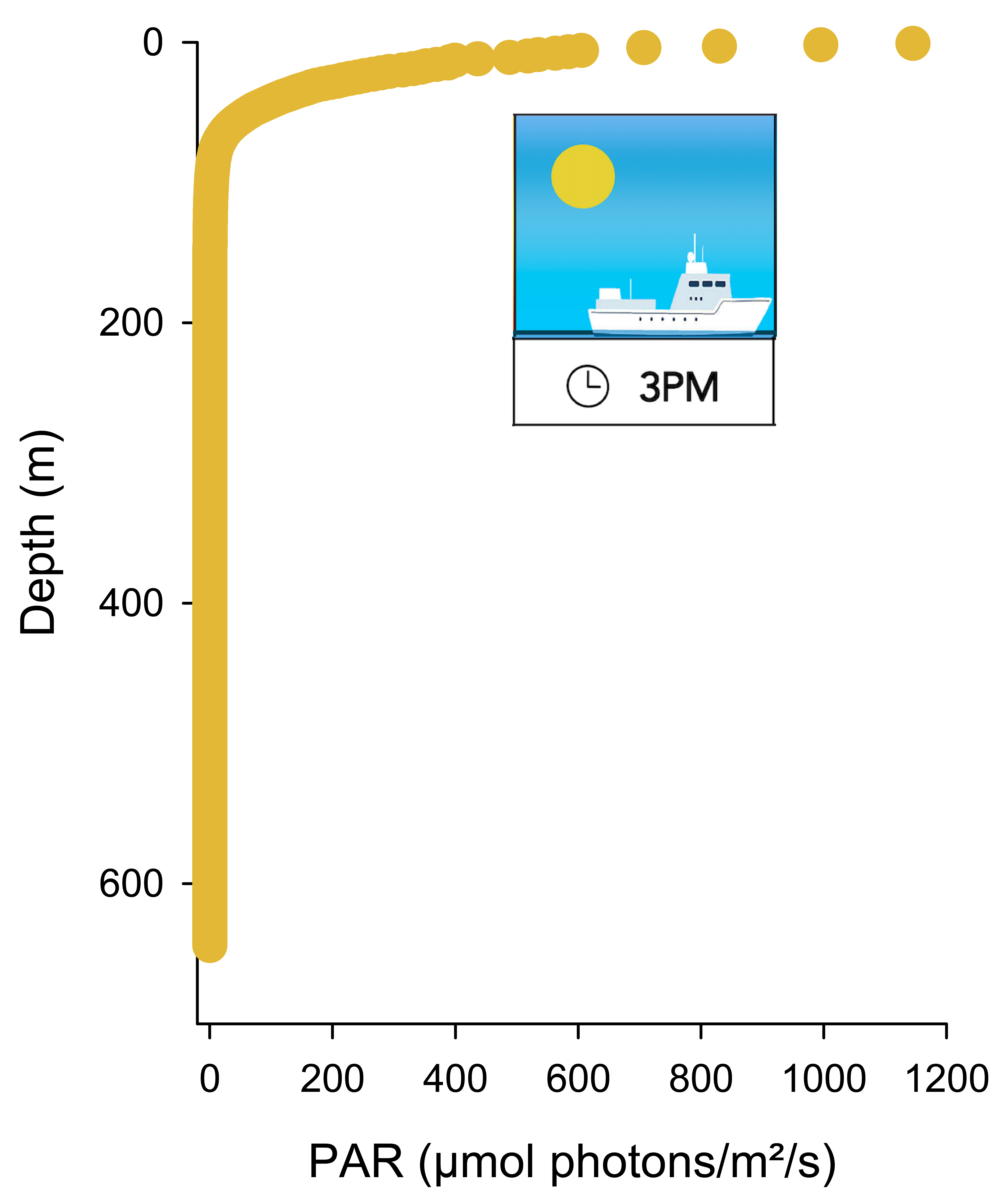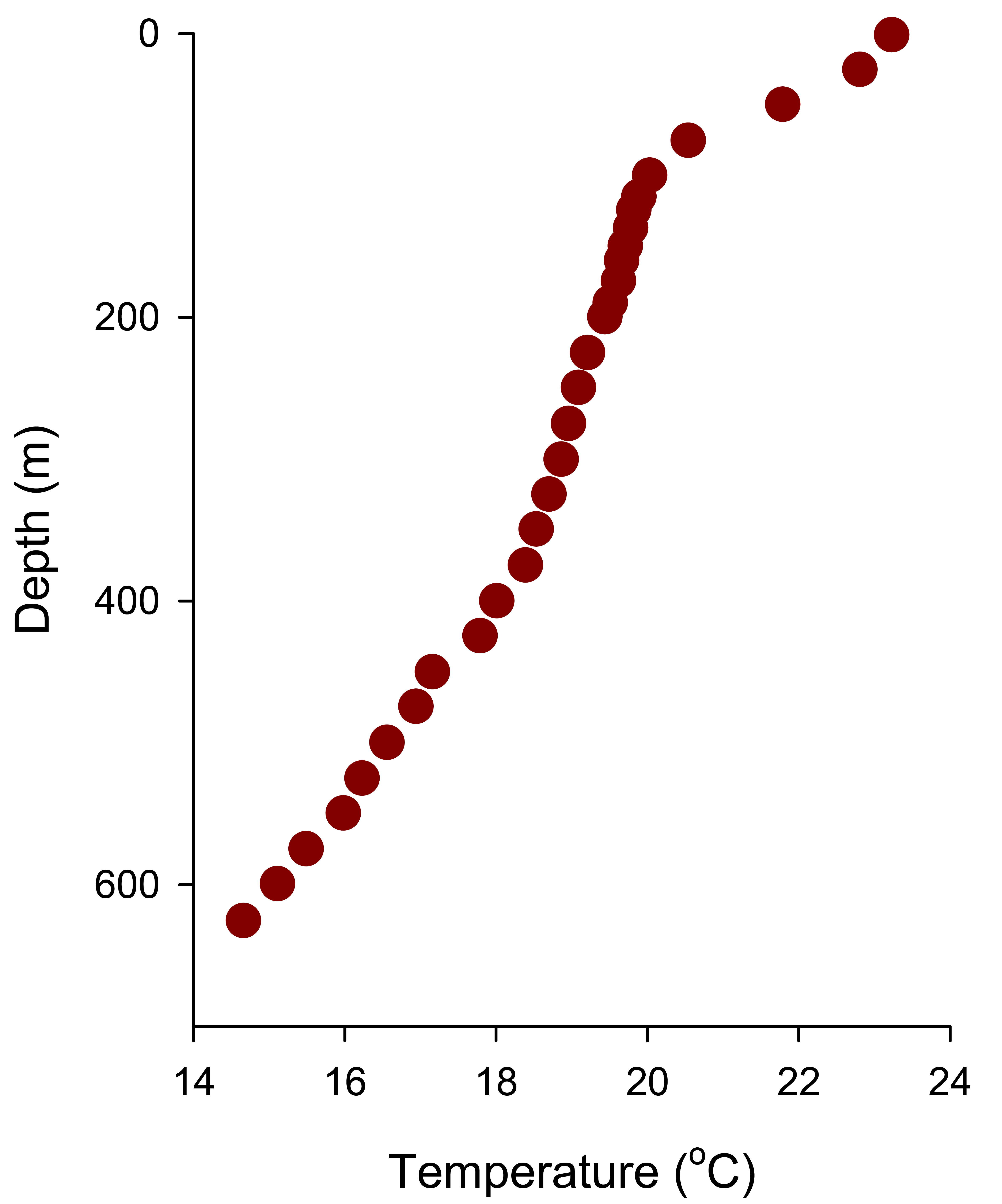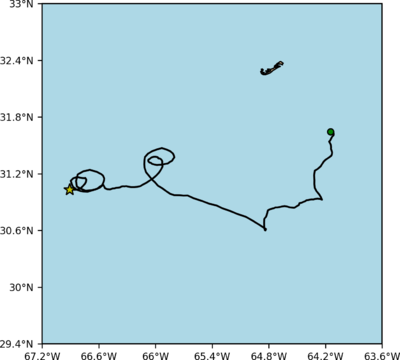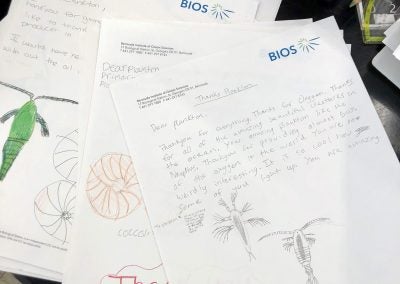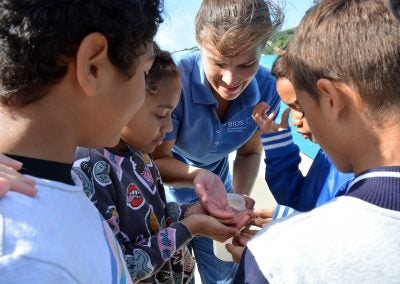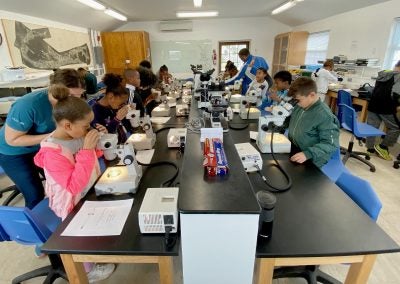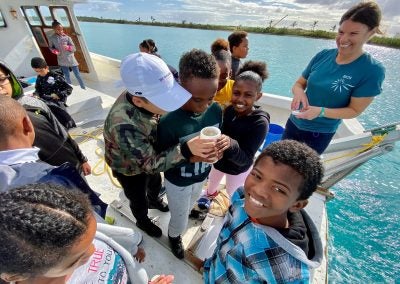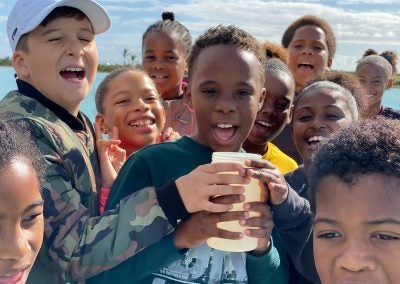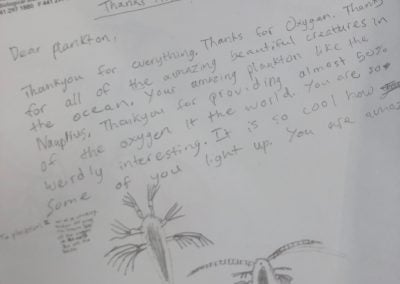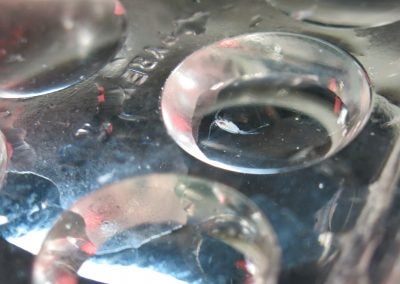Zooplankton Vertical Migration
At the base of our ocean food web, microscopic organisms known as plankton, dominate the sunlit layer of the ocean, or the euphotic zone. These plankton are plant-like (phytoplankton) and animal-like (zooplankton) organisms that play a vital role in the movement of carbon, by way of a critically important pathway known as the biological carbon pump. In the euphotic zone, ocean primary producers (phytoplankton) use the energy from the sun alongside inorganic nutrients to transform dissolved carbon dioxide (CO2), into organic carbon, through the process of photosynthesis. A tightly knit community of zooplankton that live in the dark depths of the ocean, avoiding predators during the day, make a nightly migration upward to feed on phytoplankton in the surface waters, a process known as Diel Vertical Migration (DVM). The DVM is a highly synchronized rhythmic event influenced by surrounding cues in the environment, such as light and temperature (environmental variables).
Environmental variables can often act as cues for the daily migrations of zooplankton. The production of waste products and sizing of these products are indications of metabolism and give researchers insight into the timing of migration and feeding patterns.
Check out the CTD Data and fecal pellet stack data. Educational resources were supported by NSF grant #1829318.

High Dive into the Data
How were the data collected?
- Ship: R/V Atlantic Explorer
- Location: Hydrostation S
- Lat/Lon: 32.1667 N, 64.500 W
- Oceanographic Tool: CTD rosette
CTD stands for conductivity, temperature and depth. As the instrument is lowered into the ocean it reads from a variety of sensors on both a downcast and upcast. Niskin bottles can be attached to the rosette for water sampling at different determined depths.
- AUV: Minerva
- Location: Hydrostation ‘S’
- Lat/Lon: 32.1667 N, 64.500 W
- Oceanographic Tool: Slocum Glider
The Slocum glider is an unmanned, buoyancy-driven vehicle that can make dives to 1,000 meters. The glider can carry a range of sensors and can operate for weeks at a time. The vehicle will surface to transmit data to BIOS while downloading its next dive instructions. Minerva has a light sensor that measures photosynthetic active radiation (PAR), or how much light is available in the wavelengths necessary for photosynthesis to take place.
- Ship: R/V Atlantic Explorer
- Location: Hydrostation S
- Lat/Lon: 32.1667 N, 64.500 W
- Oceanographic Tool: MOCNESS Trawl
These Multiple Opening and Closing Nets and Environmental Sampling System (MOCNESS) trawl nets are stacked one on top of each other in one frame and researchers can trigger these nets independently to collect plankton of interest. The system can also record environmental variables such as depth, temperature and salinity.
- Ship: R/V Atlantic Explorer
- Location: Hydrostation ‘S’
- Lat/Lon: 32.1667 N, 64.500 W
- Oceanographic Tool: Respiration chamber
Respiration chambers can be used for a variety of purposes, including looking at the physiology of small organisms. For this study, custom 20 ml glass chambers were filled with filtered local seawater. These chambers have a 500 micron mesh screen at the bottom to separate individual plankton from their fecal pellets. After the conclusion of the incubation period, fecal pellets were removed, photographed and weighed.

Multimedia Resources
Video: Dr Maas
In this StoriesXFuture video, Dr. Amy Maas explains how innovation and technology help ocean scientists study plankton, the tiny guys who matter a lot. Check out the video on YouTube!
VIDEO: MOCNESS SAMPLE
Samples collected during a MOCNESS trawl are poured through a sieve.
Video: Autonomous Technologies at BIOS
Ruth Curry and Cordie Goodrich. Mid-Atlantic Glider Initiative and Collaboration Check out the video on Vimeo!
Plankton Profiles
Check out this outline of commonly found plankton in Bermuda. Each species profile contains interesting facts and the role they play in the larger ocean ecosystem.
THE GREAT CARBON ELEVATOR
This schematic describes the unique role that plankton play in the Earth’s carbon cycle by way of the biological carbon pump.
Where are the BIOS Gliders?
Keep up with the BIOS Glider Fleet – Jack, Anna, and Minerva! Check out maps and data from their deployments.




